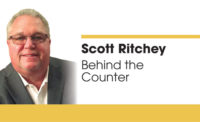The four social styles in sales
Knowing one’s social-style behavior is critical for understanding a person’s communication and decision-making process.

In the 1967 prison drama film “Cool Hand Luke,” the now infamous and often-used quote, “What we have here is the failure to communicate” was born.
The prison warden “Captain,” says the quote after Luke is badly beaten by the prison guards for failing to follow the prison protocol of a chain gang. It is the scene that defines the rules for engagement that Luke must follow or not.
Now you may be asking yourself what does this have to do with a column about building top-performing sales teams? The answer is plenty. Failure to communicate is the death nail of many presentations to prospective clients. Presentations are not only the words used but also the communication style in which they are delivered.
This is a problematic area for many salespeople. Ask yourself, “What do I know about social-style behavior?” Exactly. Knowing one’s social-style behavior is critical for understanding a person’s communication and decision-making process. The lack of understanding is why many good ideas or solutions never have a chance to succeed.
Social-style theory is based on work originated by David Merrill, who used factor analysis to identify two scales, assertiveness and responsiveness. This results in a model that has four quadrants which identify the four social styles. These social styles are “Driving,” “Expressive,” “Amiable” and “Analytical.” Social styles as a psychometric instrument help people to better understand and work with others by respecting the individual’s basic decision-making and control needs. Simply put, social style is the behavior we exhibit when interacting with others and is key in developing relationships.
“Driving” individuals are perceived as strong-willed and more emotionally controlled while “Expressivists” are described as outgoing and more dramatic. “Amiables” are easy-going and supportive where “Analyticals” are described as serious and more exacting. To effectively communicate with each style, we must understand what is important to each style type.
Drivers are highly competitive people who need to win. They seek to control the setting or conversation and are fast-acting and fast-paced with their speech. They are results-oriented and decisive people who are extremely task-focused. To win them over, presentations must be fast-paced with options giving them control over the decision process and the presentations must demonstrate an advantage over their competition, giving them the best chance to win.
Expressivists are very creative and intuitive people who are outgoing and enthusiastic. They are great motivators and quite persuasive. Their biggest fear is being rejected or left behind. To win them over, presentations must show you are interested in them and their success from an emotional level. Expressivists want the latest and greatest solutions if everyone else is doing it because they do not want to be left out. Presentations need to be delivered enthusiastically with the end result showing the expressivist how good he or she will look for making the decision.
Amiable people are friendly and dislike conflict and risk-taking. They are fearful of change and uncertainty. Therefore, their decision-making is slow and involves team consensus. Presentations should include key advisors to the amiable leader and demonstrate that change is good and the risk is low to make that change. The presentation style should be relaxed and friendly, no tension.
Analytical people like to focus on tasks more than people. They value fact over opinion and want to be sure they are right in their decisions, ensuring a decision-making process that is slow and cautious. Presentations must be factual with support documentation to back it up. Presentations must be given in an organized and structured manner.
Since selling is a relationship business, top-performing sales teams recognize they must be chameleon-like in their communication skills and readily adapt to the social style of their audience. Mastery of social-style recognition will lead to higher influence rates for your sales team. Never let your team hear, “What we have here is a failure to communicate.”
Looking for a reprint of this article?
From high-res PDFs to custom plaques, order your copy today!





